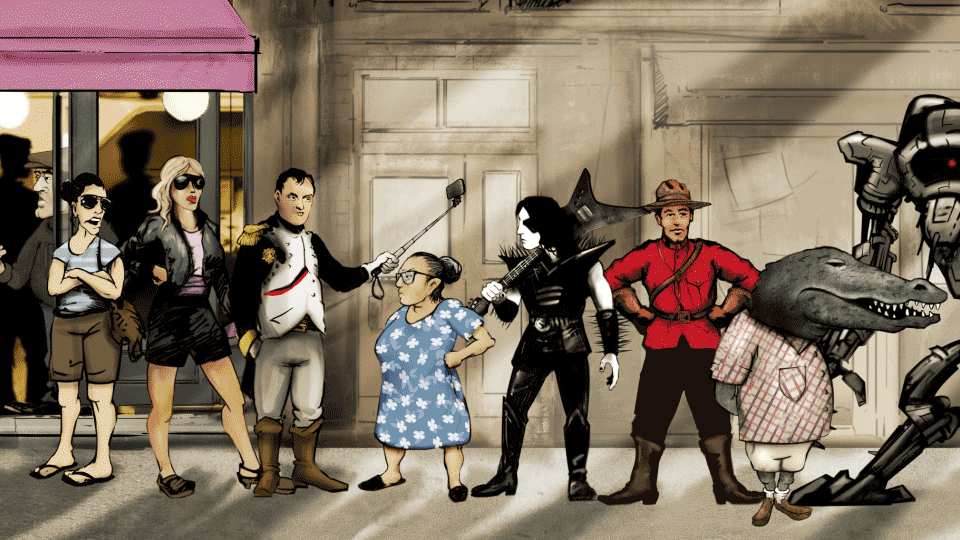How To Make Eggs Benedict, The Prune Way
 For those who haven't experienced brunch at Prune, it can be a lengthy affair. Hungry diners will wait hours to get eggs and a Bloody Mary at the 30-seat restaurant. Of course, what they're waiting for is totally worth the wait. And the people preparing those eggs and Bloody Marys are hustling harder than anyone else in New York City at 10am on a Sunday. But now, you can skip the line and make this Gabrielle's perfect Eggs Benedict at home. Just don't forget to snip the long white tails of cooked egg white so your eggs don’t look like pollywogs/sperm.
For those who haven't experienced brunch at Prune, it can be a lengthy affair. Hungry diners will wait hours to get eggs and a Bloody Mary at the 30-seat restaurant. Of course, what they're waiting for is totally worth the wait. And the people preparing those eggs and Bloody Marys are hustling harder than anyone else in New York City at 10am on a Sunday. But now, you can skip the line and make this Gabrielle's perfect Eggs Benedict at home. Just don't forget to snip the long white tails of cooked egg white so your eggs don’t look like pollywogs/sperm.
[embed]https://youtu.be/vN6yFPl6zt8[/embed]
Eggs Benedict
Feeds 4
Ingredients
2 quarts water 1 Tablespoon white vinegar 4-well toasted Thomas’s English muffins, generously buttered 8 slices Canadian bacon Hollandaise Sauce
For Hollandaise Sauce
½ pound butter, melted just before use 3 egg yolks 2 Tablespoons fresh lemon juice 1 teaspoon kosher salt ¼ cayenne pepper
Directions:
1. Bring water to a boil in wide, high-sided sauteuse.
2. Add white vinegar; reduce heat to a healthy simmer.
3. Crack each egg into a ramekin, then tip the ramekin into the simmering water. Swirl the water gently with your spoon to create motion. For grade A, large eggs right out of the refrigerator, poach for 2 minutes and 30 seconds. Arrange the English muffins in matched pairs (one top, one bottom) on the plate.
4. Warm the Canadian bacon on the griddle and set on each English muffin.
5. Retrieve the eggs with a slotted spoon, rest your spoon briefly on a folded dish towel to drain, then set the eggs on the muffin.
6. Drape each egg with a generous spoonful of the hollandaise sauce.
If you are working the egg station, take care with your poaching water throughout the shift. Clean it frequently and go easy on the vinegar—it makes the whites chalky and sour and the eggs have a pockmarked appearance if you put too much acid in the water. Snip the long white tails of cooked egg white so your eggs don’t look like pollywogs/sperm. And please use the ramekin for tipping each egg into the water bath–there is no episode more crushing during the middle of insane brunch than to crack an egg directly into the water only to discover the yolk is already broken, making egg drop soup of your poaching bath.
For the Hollandaise Sauce:
1. Put the yolks in stainless steel bowl. Whisk in the lemon juice. Secure the bowl on a damp kitchen towel, and pour the hot melted butter into the yolk mixture in a steady stream, whisking constantly, always keeping the emulsion.
2. As it thickens up, it will feel thick and heading toward pasty, but at the very end, whisk in all the watery and separated milk solids from the bottom of the melted butter and it will think out to a ribbony and silken sauce. Please don’t deviate from this method by clarifying the butter or by whisking it over a double boiler or by melting the butter in a microwave—this is really how I want it and also I have never broken a batch of hollandaise in 15 years of Prune brunch.
3. Hold your hollandaise warm in a bain inside a hot water bain, but change it out regularly during service and keep it as far away from the heat of your burners in your station as you can. This is a pretty sturdy version, but still. Hollandaise is a fragile sauce and that blasting heat in the sauté station can break it. If you need to think during service, use 1 Tablespoon of lukewarm water and whisk vigorously. If you need to re-emulsify during service, add a squeeze of lemon juice and whisk briskly. But then taste if it needs a little reseasoning.
4. When seasoning, please keep in mind that the sauce will be dulled significantly by the runny egg yolks of the poached eggs as well as the buttered English muffin in the finish fish, so be sure to season high and bright with lemon and salt and cayenne. The cayenne, however, should only provide “warmth,” not heat- we are not a southwest restaurant.

